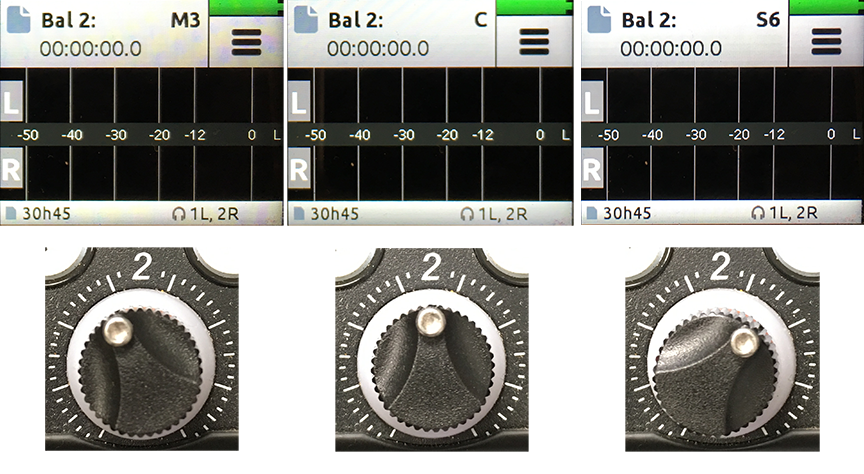Using the Sennheiser MKH 418S Stereo Mic with the MixPres
The Sennheiser MKH 418S is a stereo version of the Sennheiser MKH 416 microphone. It is a Mid-Side (M-S) stereo microphone. These types of microphones are made of two microphones inside of one housing. There is a directional mic (Mid) which picks up the sound from in front of the microphone and a bi-directional mic (Side) which picks up sounds from the left and right sides of the microphone.
The output of this mics has two signals, one for Mid and one for Side. They are not the normal Left – Right stereo and require a MS matrix circuit built into the audio recorder to turn it into L-R stereo. The only recorders in the FVCage that can do this are the Sound Devices.
This tech doc will go over the basics of using the Sennheiser 418S for mono (Mid) and stereo (Mid-Side) recording and how to set up the MixPre for stereo Mid-Side recording. Refer to the MixPre Quick Start Guide for basics on using the MixPres.
Mono Applications
Because the 418S has two microphone capsules inside of the housing, it can be used like any other shotgun mic by only recording the Mid signal.
Recording dialogue:
- Use the Mid signal to record dialogue as you would with any shotgun, by moving the mic between actors.
- Do not use it as a stationary or moving stereo mic for dialogue. Leaving the mic stationary in stereo between actors leaves the sweet spot of the mic pointed at no one. Moving the mic in stereo will have the sweet spot aimed at the speaking actor, but the background will be heard moving.
Recording stationary sound effects:
- Specific sounds that are usually connected to something happening on screen (e.g. door slam, toast popping up, hammer hitting a nail, car door slam, etc.) are best recorded in mono using the Mid signal only. Keep the microphone stationary and avoid making any noise.
Cardioids are best for specific sound effects, but the Mid capsule of the 418S is usable.
Stereo Applications
The 418S can be used for stereo applications by using both the Mid and Side signals.
Recording moving sound effects:
- Very specific sounds and backgrounds (e.g. a single car passing by, traffic, etc.) that have movement should be recorded in stereo. Keep the microphone stationary as the moving object passes and avoid making any noise.
- Do not pan the mic to follow the object. This will defeat the purpose of recording in stereo.
Recording background ambiences:
- This is the most common use for a stereo mic (e.g: background crowds, ambient background, etc.). Keep the microphone stationary and avoid making any noise.
The 5-pin XLR Female to Dual 3-pin XLR Male Cable
The cable that comes with the 418S has a 5-pin XLR female that breaks into two 3-pin XLR male cables. They are labeled 1 (Mid) and 2 (Side).

Plug the 1 (Mid) XLR into Mic 1 input and 2 (Side) XLR into Mic 2 input of the MixPre. If you are only recording the Mid signal, plug both XLR cables in so there aren’t any dangling and potentially making sound.
Recording Mono (Mid) with the MixPres
- Load the 1 Mic preset. Tap Manu > Presets [page1] > Load Preset. Use the headphone encoder knob to highlight and select 1 mic.
- You are now ready to record.
Recording Stere (Mid-Side) with the MixPres
- The MixPres have a MS matrix circuit that needs to be engaged for use recording stereo (Mid-Side) this is not needed for recording mono only (Mid). To use this matrix circuit, load the 418S preset. Tap Menu > Presets [page 1] > Load Preset. Use the headphone encoder knob to highlight and select 418S. This will link Channel 1 and 2.
- The Channel 1 knob will now control the level of both the Mid and Side signal.
- The Channel 2 knob will now control the balance between them. When turning the Channel 2 knob, the LCD display will show M or S with a number to indicate balance between them. The higher the humber, the more the balance is moving toward that signal. When it is equal balance, it will read C.

Start with the balance at equal and adjust accordingly. Because of the high directionality of the Mid signal, you may want to balance slightly in favor of the Side signal in order to achieve natural sounding stereo.
- You are now ready to record.
